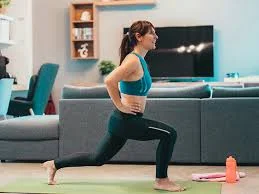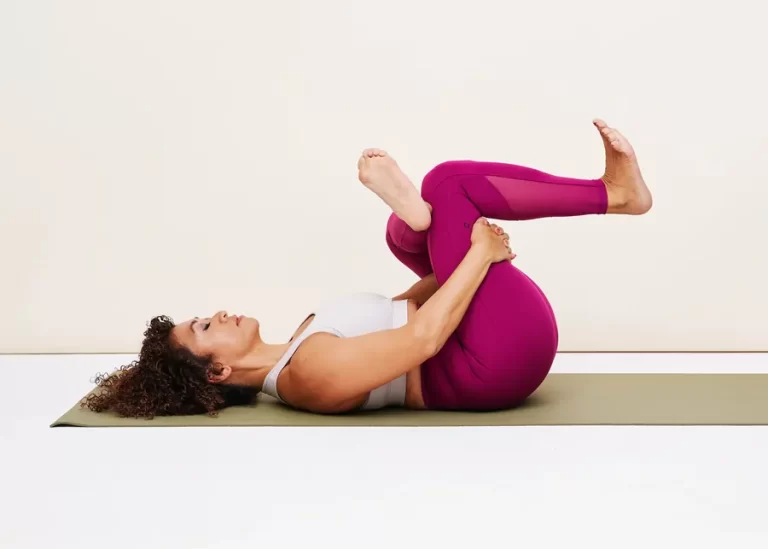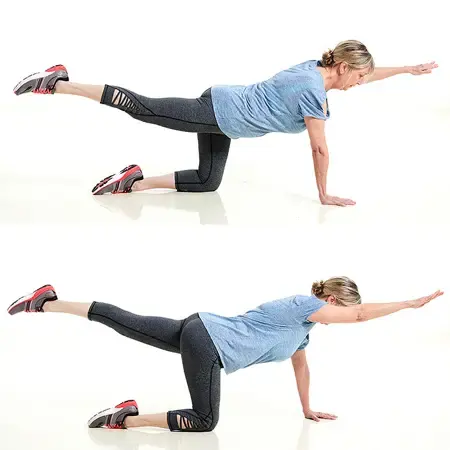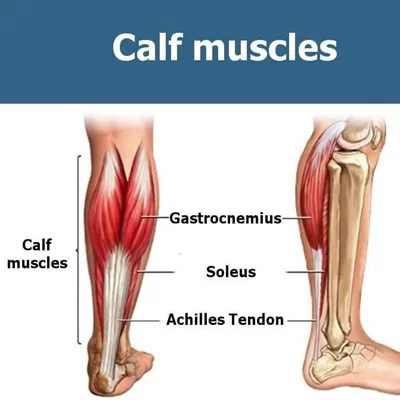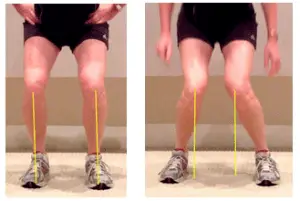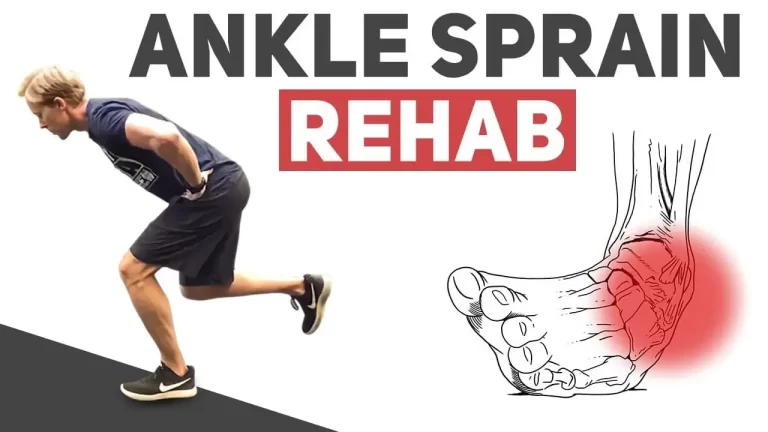Lunges Exercise: Benefits, Type, Variations, How to Do?
What is the Lunge Exercise?
- Lunge exercises are excellent for strengthening the legs and buttocks.
- Lunge exercise primarily works for your lower body’s major muscular groups.
- This raises your metabolism, which speeds up the weight loss process.
- After you lose this excess fat, lunges improve the strength and form of your lower body.
- Due to the fact that lunges work on both sides of the leg separately, they are categorized as lower-body unilateral exercises.
- Your stabilizing muscles are activated during one-leg movements, which improves joint stability, balance, and coordination.
- The lunge is a popular leg-strengthening exercise that may liven up your routine because there are so many variations available.
- You can use different variations of lunges to activate different muscles or specific sections of those muscles.
- Both the prevention of injuries and the recovery process following leg injuries can benefit from this exercise.
- It frequently forms a part of a rehabilitation protocol or basic strength program, letting athletes and sportsmen get back to their favorite activities as quickly as feasible.
- Another useful exercise that gets you ready for actions you’ll need in everyday life is the lunge.
- Walking includes getting up quickly from the ground, sprinting up or down steps, and climbing.
What muscles work during a Lunge?
Many muscles are utilized to stabilize and move the upper and lower bodies during a lunge exercise.
- Quadriceps muscle
- Gluteal muscles
- Hamstrings
- Calves (gastrocnemius and soleus)
- Transverse abdominis
- Obliques
Benefits of Lunges Exercise:
Here are some advantages of performing lunges;
- Improved balance
Exercises like lunges train one side of your body separately from the other at the same time.
By doing this, you can achieve the best possible physical balance and coordination.
Lunges provide far more stabilizing advantages than exercises like squats and deadlifts.
- Makes the gluteal muscle and legs stronger
The gluteal muscles and legs can be effectively strengthened using lunges. Lunges strengthen all the lower body muscular groups, which increases metabolism and speeds up weight loss. Once excess fat is eliminated, lunges promote the strength and form of your lower body.
- Flexibility in the hips
In most other types of training, flexor muscles get overlooked during a workout.
Sedentary lifestyles are an important factor in stiff flexor muscles.
- Improved spinal health
Lunges help the strain that many workouts place on your spine by giving it a moment to rest.
Lunges relieve tension and restore mobility to your spine while you work on other areas of your body.
- Excellent workout for runners
Lunges are an excellent exercise for runners since they involve similar muscular activation as running. The steps that are done before landing are similar to a running stride.
- Lunges are easy to do and quite helpful
Lunges are an excellent way for anyone, regardless of fitness level, to start strength training. You can become good at this equipment-free technique and gradually progress to more difficult variations. You can begin at your own house, at the fitness center, or even during your midday meal at work.
What is the correct way to perform Lunges Exercise?
It’s important to perform lunges correctly and comfortably. To prevent injury, you shouldn’t put too much strain on your knee and hip joints.
Here, we go over how to perform a correct lunge;
- Your quadriceps, hamstrings, and glutes will all get stronger with lunges.
- You’ve stepped your right leg forward in front of you and positioned your feet together on the ground for this.
- Press your left knee to the floor while keeping your right leg at a 90-degree angle.
- You can examine your body’s alignment and posture by examining yourself in a mirror.
- You must take a step off with your right foot in order to return to the starting position.
- Step forward with your left leg while extension at the hips, and lower your right knee to the ground.
- Then relax.
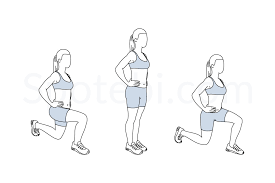
Lunges Exercise Video
Lunges Exercise Variations:
The lunge has several different versions. All of them exercise the same muscles, although some are worked more than others. To add variation and difficulty to your workout, you may perform a different version each time or mix and match different variations.
Low Lunge
- Start the downward dog position by putting your right foot in front of your hands as soon as you let go of the breath.
- Bend your left knee toward the floor and plant the toe of your left foot on the ground.
- Take a breath, raise your chest, and put your head to the sides.
- Breathe out for a short while from the low lunge stance.
- Take a step back, exhale, place your hands on the floor, lift your left leg, and then lower yourself back into downward dog.
- Continue with the other leg.
- Return to your neutral position.
- Then relax.
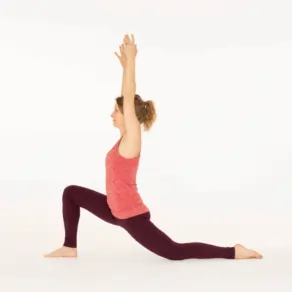
Walking lunge
Walking forward is the main way to perform the walking lunge, but it can also be done backward.
- You must maintain a wide stance with your feet spread apart.
- As you raise your right leg forward and drop it until your knees make a 90-degree angle, bend both of your knees.
- Lean forward with your left leg.
- Step up after each lunge, utilizing both legs to push off.
- Continue doing this on a different leg until it becomes comfortable.
- The forward lunge is one type of walking lunge that is employed.
- This type of walking lunge requires less balance and is simple.
- Then, by adding some weights, you can further increase the difficulty.
- Start with a lighter weight and work your way up to a heavier one if you want to make it more difficult.
- Then relax.

Lateral lunge
- The only distinction between the lateral lunge and the forward-stepping lunge is that the latter requires you to move your foot to the side.
- A single one that is in movement.
- A greater priority is placed on the adductors, a kind of muscle found in the inside thighs.
- This involves keeping your feet apart, bending your right knee to a 90-degree angle as you go down, and moving your right leg sideways while holding the same upright position.
- Return to the beginning position now.
- Use this for your left leg.
- Then relax.

Curtsy lunge
In this lunge version, we focus extra on the gluteus medius and hip adductor muscles. During the gritty lunge, the gluteus medius stabilizes your pelvis.
- This exercise requires you to bend both of your knees until your front thigh is just parallel to the floor.
- It would help if you stood with your legs crossed so that the heel of your back foot would rise off the ground.
- Your knees will go straight to your toes if you attempt to tighten your core muscles.
- During this exercise, the gluteus medius stabilizes your pelvis while you lunge with your legs crossed, and the inner thigh muscles maintain that position as you drop.
- You have to extend both of your legs to do this.
- With the opposite leg cross, perform the previously described movement once more.
- Then relax.
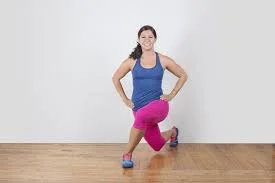
Lunges with dumbbells
You will need two dumbbells of the same weight that you can lift comfortably while performing lunges for this type of lunge workout.
- Put your left foot back and your right foot forward, nearly three feet apart, this is how you should stand for this exercise.
- Dumbbells must be held in both hands and by your sides.
- Your knees must be bent in order to lower your body to the ground.
- Instead of lowering forward, keep the front knee straight and avoid letting it go past the toes.
- Maintaining your posture with your trunk straight and your abs strong, pull through the front of your heel to reset you.
- It is best not to lock your knees when lunging.
- Then relax.
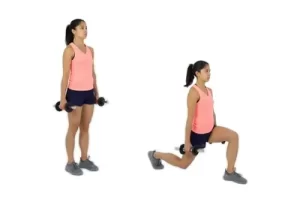
Split Squat With Rotation
An exercise for strengthening muscles, lower body power, coordination, and stability that can be done on one leg is the split squat.
This exercise will test your glutes and core muscles because it involves an elevated split squat plus an additional trunk rotation in the opposite direction.
- Place your right foot on top of it so that it rests on the toe.
- At this point, regain your balance and extend both of your arms to the sides.
- At this point, you must lunge while bending your left leg.
- Raise both arms above your head and shift your entire body to the left.
- Next, face forward and raise yourself to a standing position.
- To complete this workout, you must step up three to four feet.
- Then relax.
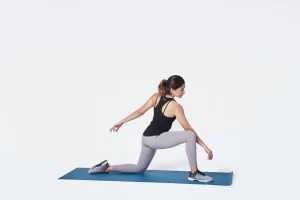
Bodyweight Reverse Lunge
- Maintain a shoulder-width distance between your feet.
- You can do this by putting your hands together in front of your chest or by touching your hips.
- Here’s where we start.
- Raise your right foot and take a few backward steps, making sure that you touch down on your foot’s base rather than the bottom of it.
- You should be nearly parallel to the ground once you have bent both legs.
- To avoid having an arched or rounded back, your body should bend slightly forward.
- Together with a tightened core and butt, you ought to bend your left knee over your left foot.
- To get back to where you were before, push from your left heel.
- Once you have completed all the repetitions on one leg, move on to the other.
- If you’d rather, you can even switch up the legs.
- Then relax.

Jump Lunge
- Continue to stand with your shoulders shoulder-width apart, your core firm, and your posture straight.
- Slide your left leg backward while maintaining strong forward foot planting with your entire body supported by your feet’s heel.
- To switch your legs midway through a jump, bend forward and bring your right leg back.
- Ensure your chest is raised and use your arms to help you jump wildly before landing with both legs bent 90 degrees.
- Continue alternating legs without letting your knees get out of alignment.
- Then relax.
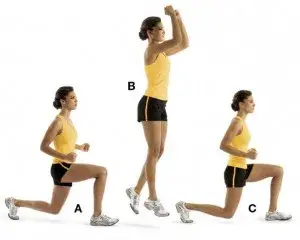
Use this advice to work safely:
- Before beginning an exercise routine, make sure your body is warmed up appropriately.
- If exercising hurts, you should stop.
- Increase the length and repetition count of your workout gradually to prevent overdoing it and causing tight muscles.
- Always use good form when exercising to avoid physical harm and to achieve the intended results.
- Try to wear clothing that won’t significantly limit your range of motion while you are working out. Wear relaxed clothing instead.
When should you stop exercising the lunge?
- Hip damage
- Injury to the knee
- In recent leg surgery
- If any pain arises while performing the workout.
- Use the easy form of this exercise if you have trouble with your balance.
- If as you exercise your pain increases.
When doing lunges, what typical mistakes should you avoid making?
To maximize performance and reduce damage risk when lunging, stay away from these typical mistakes;
- Not warming up
To avoid strains or pulls, warm up your muscles before lunging.
- Overloading
To avoid putting undue strain on your joints, avoid overextending by keeping your front knee in line with your ankle.
- Lying forward
To avoid putting too much strain on your back, keep your posture straight and make use of proper muscles.
- Repetition speeding
To guarantee correct form and muscle engagement, concentrate on thorough motions rather than completing repetitions quickly.
- Foot placement ignored
If you want to stay stable and avoid twisting, make sure both feet are firmly planted and pointed forward.
Summary:
Lunges are a well-liked and adjustable strengthening exercise. It provides several advantages and activates a lot of muscles at once. Switching up your technique lets you highlight different muscles or areas of them.
Both injury prevention and recovery are helped by this exercise regimen. It is often included in a basic strength program or rehabilitation treatment, allowing athletes and exercisers to return to their intended sport or activity as quickly as possible.
Add this exercise into your routine, and enjoy the variations to maintain it interesting.
FAQs
Why are lunges a beneficial exercise?
The quadriceps, hamstrings, and glutes are among the big lower body muscles that are worked out during lunges. Strength training exercises like this one can improve flexibility, reduce muscular imbalances, and raise metabolism. It is common practice to perform the forward lunge variation of this exercise.
Are thighs slimmed by lunges?
The best exercise for lowering thigh fat is lunges. They target your glutes, quadriceps, hamstrings, and thigh adductors in addition to increasing muscle strength and metabolism.
Can I perform lunges daily?
Because your muscles need extra time to repair, you shouldn’t practice lunges with weights more often than every other day. On the other hand, doing bodyweight lunges every day of the week has advantages.
How much should I practice a lunge?
Three to four sets of fifteen to twenty bodyweight lunges in each leg are recommended. Beginners should work each leg 10–12 times during their first few sets. Use a weight that allows you to perform 12–15 lunges on each leg for three sets if you’re using a barbell or dumbbell to add external resistance to your lunges.
What is the best lunge variation?
For applying transverse plane loads to the knee and regulating tri-planar motion, transverse and curtsey lunges are excellent exercises. Most people believe that rotational lunges are a step up or more complex than standard forward or backward lunges.
What three advantages do lunges have?
It helps build muscle, develop your lower body, and give you the ideal pair of buttocks you’ve always wanted. Lunges are very safe, easy to learn, and don’t require any special equipment, which is their best feature.
Is performing lunges every day advisable?
Although lunges are an excellent exercise to include in your training regimen, you don’t have to perform them every day, particularly if you’re performing weighted lunges.
How quickly should I perform lunges?
Moving into lunges too quickly and carelessly increases the risk of injury, particularly to the knees and lower back. Form is important to me, but when working hard to achieve a goal, you should make the most of your efforts and minimize any dangers.
What is the target of a lunge?
Large lower-body muscles, such as the quadriceps, hamstrings, and glutes, are worked during lunges. This strengthening exercise can improve flexibility, speed up metabolism, and serve to treat muscular imbalances. The forward lunge is the variation of the exercise that is most frequently performed.
References:
- N. P. (2023f), a physiotherapist, December 13. Exercises: Lunges: Advantages, Type, Variations, How to Perform? Mobile Clinic for Physiotherapy. Exercise for the Lunges: https://mobilephysiotherapyclinic.in/
- April 14, 2023: Mpt, T. E. P. Lunges Employ Which Muscles? The website Healthline provides information about fitness exercises, including lunges and exercised muscles.
- (2024, May 10). Ningthoujam, N. The top ten lunge variants to work on your butt. The following link: https://www.healthshots.com/fitness/muscle-gain/lunge-variations/
- February 14, 2023: Nasm-Cpt, R. B. Lunges: How Strength Is Built by the Seven Advantages. You can improve your physical condition and muscle power by doing lunges. reputable Rx website
- Image 2, Daisy. August 8, 2021i. Exercise Guide with Illustrations: Walking Lunges. Walking lunges are an exercise type that can be found on SPOTEBI.
- Image 6, Dumbbell Lunges in Opposition. (2021b), October 1. Press My Keyboard. alternating dumbbell lunges at https://hitmymacros.com/exercises/
- Image 7, On June 13, 2024, Cpt., P. W. The Correct Form, Variations, and Frequently Made Errors in Lunge Technique. well-fitting. This page describes how to do lunge variations, modifications, and mistakes (123,320).
- Image 9, P. T. Food (2016) 22 January. Segment leaps. Our Meal Plan Blog for Losing Weight. split-jumps are discussed in https://www.personaltrainerfood.com/blog/

